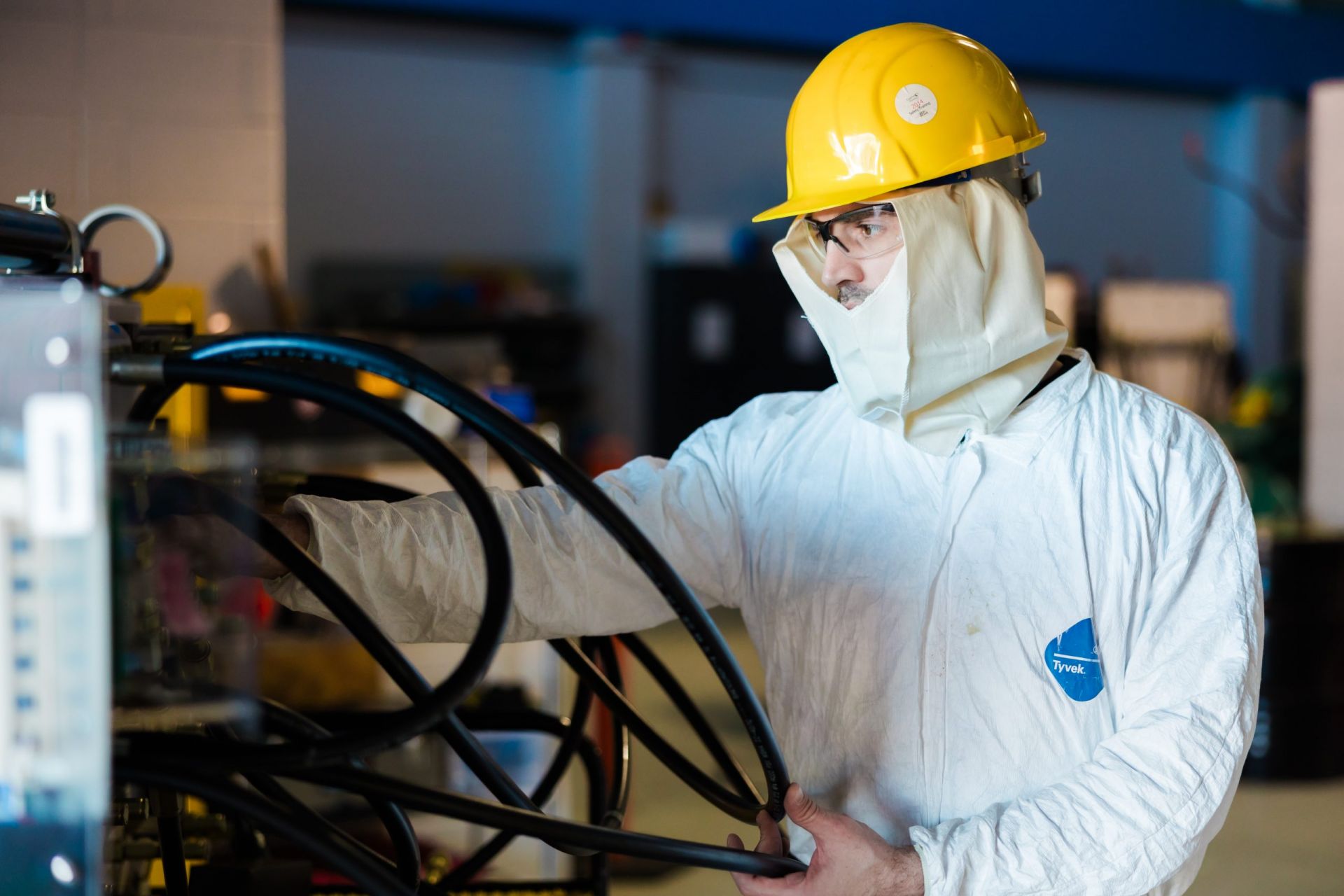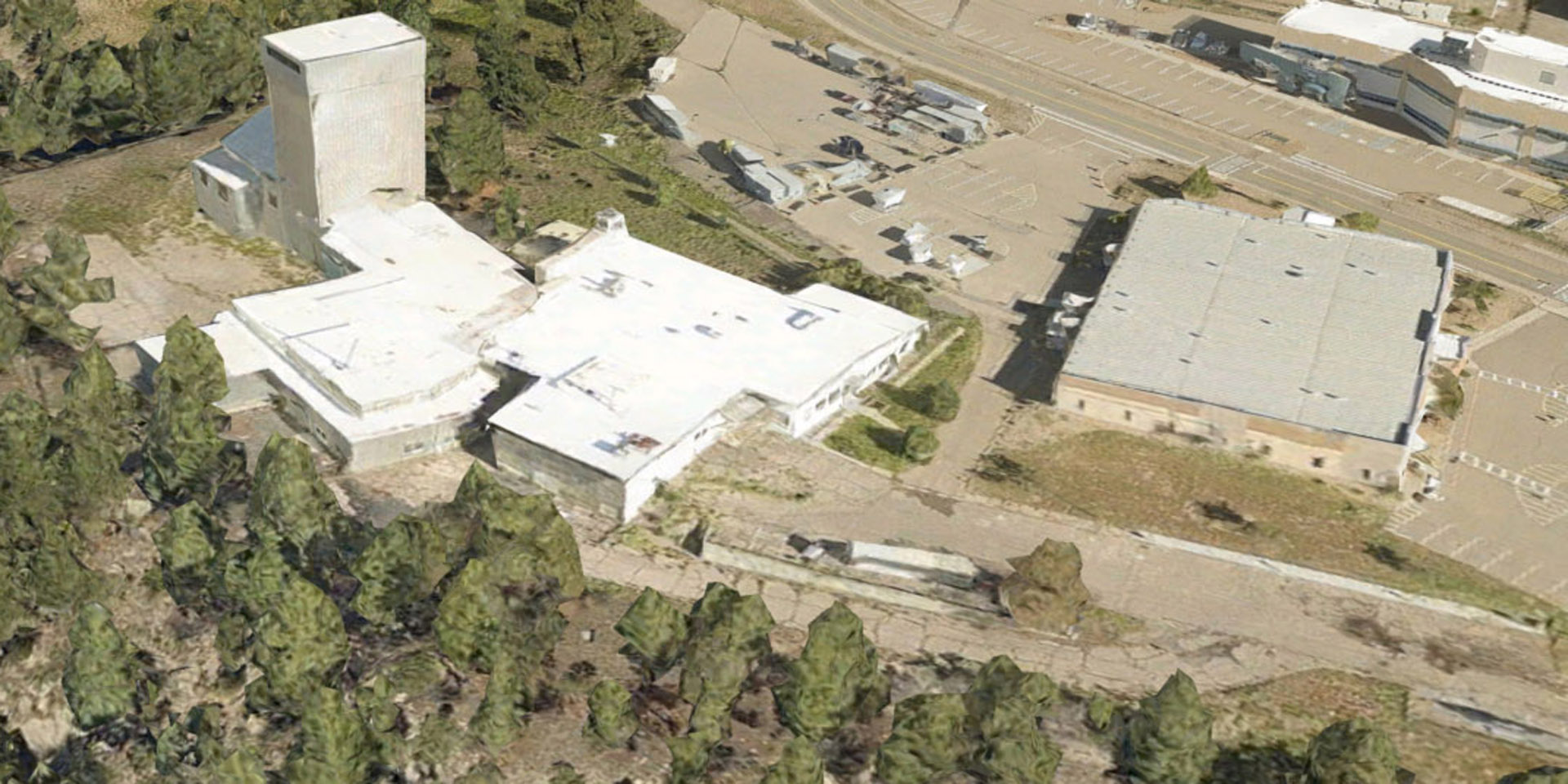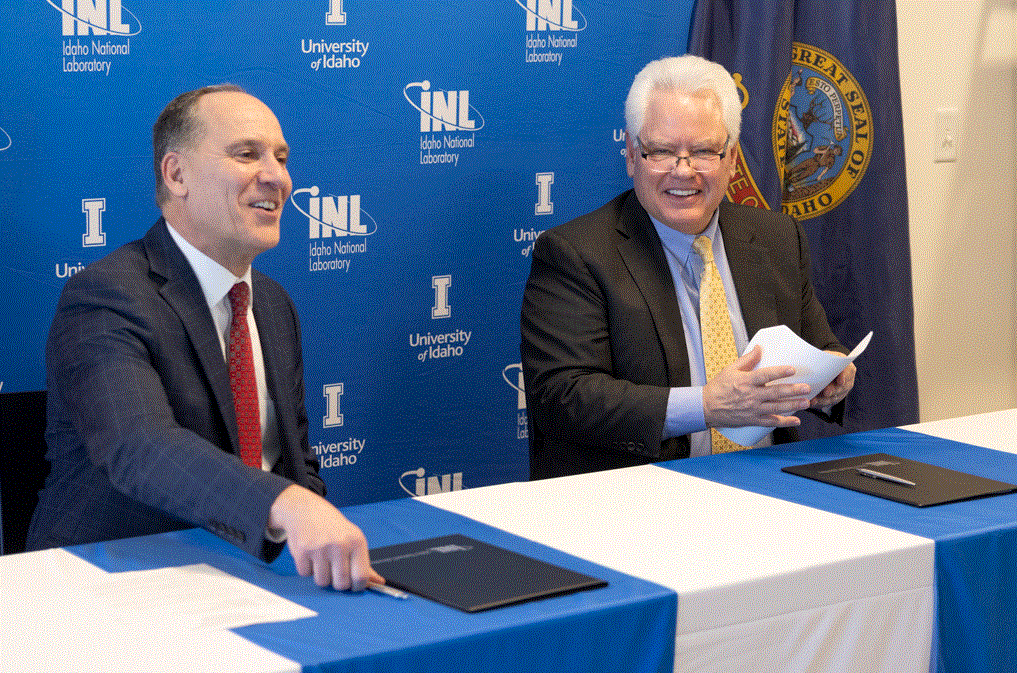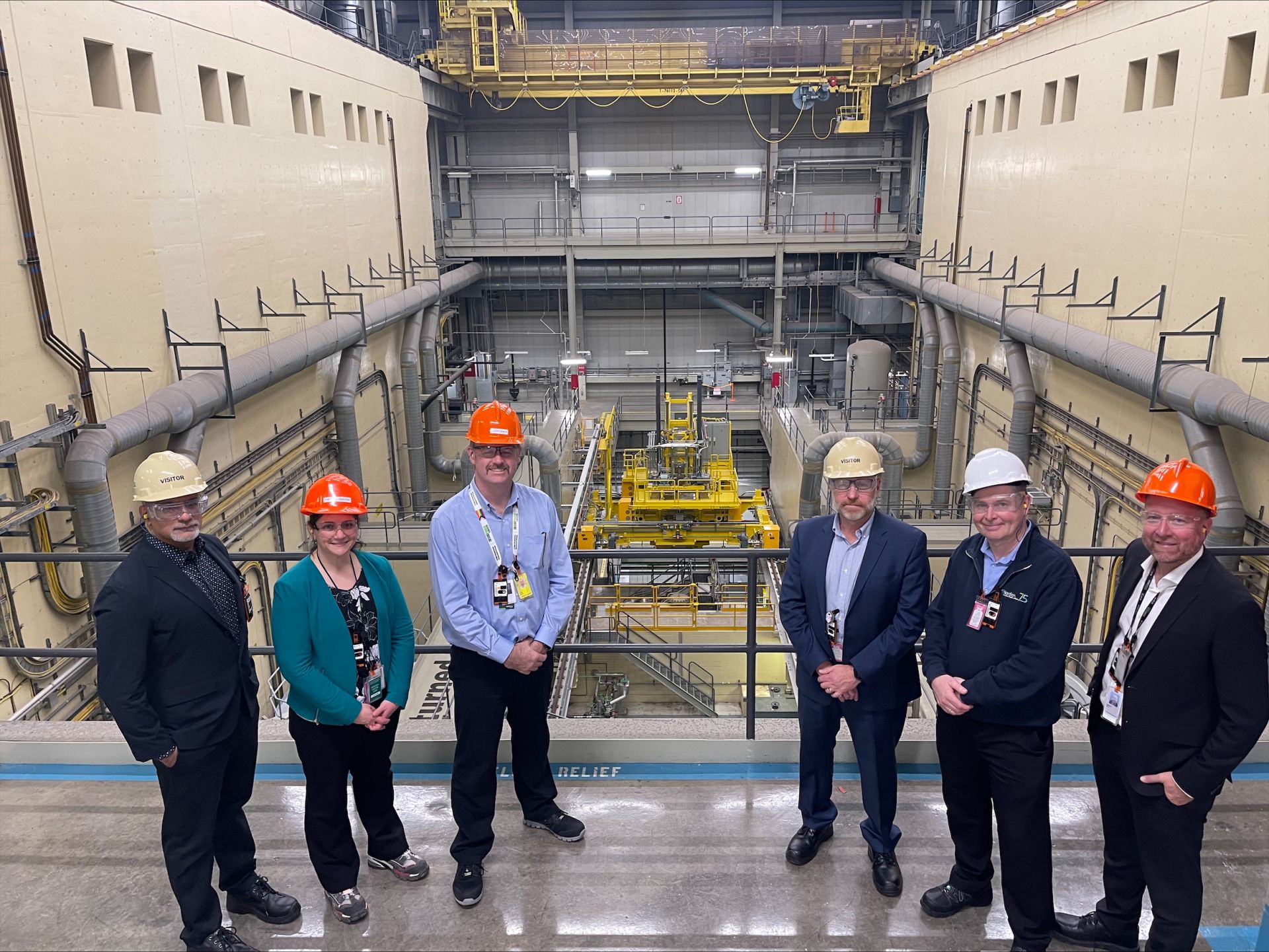Participants celebrate Texas A&M’s announcement about hosting SMR units from four nuclear companies. (Photo: Texas A&M)
Texas A&M chancellor John Sharp has announced that the university could soon become a home to small modular reactors from four advanced nuclear companies: Kairos Power, Natura Resources, Terrestrial Energy, and Aalo Atomics.
Photo: Cape Fear Community College
Cape Fear Community College (CFCC) in Wilmington, N.C., has appointed Kelli Davis its first Nuclear Technology program director. Davis has nearly 20 years of experience in nuclear power, including roles in chemistry, operations, and environmental supervision.
The Ion Beam Facility, center, at Technical Area 03 at LANL. (Photo: DOE)
Work has started at the Department of Energy’s Los Alamos National Laboratory in New Mexico to deactivate, decommission, and remove the Ion Beam Facility, which played a role in research and experiments that helped develop the nation’s nuclear arsenal during the 1950s and 1960s.
A ground breaking marked the beginning of advanced SMRs in Sweden. From left, Jenny Wirandi, head of engineering at OKG; Johan Svenningsson, chief executive of Uniper Sweden; Jacob Stedman, chief executive of Blykalla; Ebba Busch, Sweden’s minister for energy and business and deputy prime minister; and Per Erik Holsten, president of energy industries at ABB. (Photo: Marcus Beckford/Blykalla)
An official ground breaking on Monday for Swedish nuclear company Blykalla’s advanced reactor testing site marked a pivotal step in putting decades of research into action.
Concept art of NANO Nuclear’s ALIP MR-12 internal structure (skeleton). (Image: Nano Nuclear)
To better educate customers and stakeholders on its technology, NANO Nuclear Energy has opened a new demonstration facility in Westchester County, N.Y., that offers an up-close look at nonnuclear parts and components of the four microreactors the company has in development.
El Salvador foreign minister Alexandra Hill Tinoco and U.S. secretary of state Marco Rubio signed a nuclear energy MOU. (Photo: X)
Officials from the United States and the Republic of El Salvador signed a memorandum of understanding Monday, agreeing to cooperate on strategic civil nuclear development.
In one of his first acts in office, U.S. secretary of state Marco Rubio signed the MOU with El Salvadoran foreign minister Alexandra Hill Tinoco during his recent visit.
INL director John Wagner and University of Idaho president C. Scott Green at the SUPER agreement signing. (Photo: INL)
New Strategic Understanding for Premier Education and Research (SUPER) agreements signed by Idaho National Laboratory, Boise State University, and University of Idaho will foster collaboration among the institutions in advanced energy and cybersecurity projects. The five-year agreements are designed to open doors for research and development opportunities, while advancing existing research and development initiatives, including projects in nuclear energy and high-performance computing.
Concept art showing a FNPP design. (Image: Glosten)
A team of innovative companies has plans to bring floating nuclear power plants to U.S. ports.
Core Power, a maritime and nuclear technology company, announced in January a new partnership in with naval architecture company Glosten. The pair is working on a design for a floating nuclear power plant (FNPP) that could generate up to 175 gigawatt-hours of clean electricity annually and provide clean power to ships, equipment, and port vehicles, Offshore Energy reported.
A rendering of a possible geologic disposal facility on the coast of northwest England. (Image: NWS)
The U.K. government’s Nuclear Waste Services said it has identified three “areas of focus” in its search to find a suitable site and a willing community to host a geologic disposal facility (GDF) for the country’s most hazardous radioactive waste. The areas are within three communities currently involved in the siting process—Mid Copeland and South Copeland in Cumbria, and East Lincolnshire, England.
OPG and Nordion employees at Darlington’s recently refurbished Unit 1, which has been modified to produce cobalt-60 isotopes. (Photo: OPG)
Ontario Power Generation in Canada announced that Unit 1 of its Darlington nuclear power plant, which has returned to service from refurbishment, is now producing the medical isotope cobalt-60. During refurbishment activities, OPG made modifications to the unit to allow it to produce Co-60, which is used to sterilize 30 percent of the world’s single-use medical devices, such as syringes, gloves, and implants.
Radiation is essential in medical diagnosis, cancer therapy, food irradiation, CT scans, security checks and detection, and many consumer products. It is ubiquitous and enormously beneficial to all forms of life on Earth.
January 31, 2025, 3:18PMNuclear NewsJong H. Kim, Gyuseong Cho, Kun-Woo Cho, Tae Soon Park & Keon W. Kang Despite its significant benefits, the public perception of radiation is generally negative due to its inherent nature: it is ubiquitous yet cannot be seen, heard, smelled, or touched—as if it were a ghost roaming around uncensored. The public is frightened of this seemingly creepy phantom they cannot detect with their senses. This unfounded fear has hampered the progress of the nuclear industry and radiation professions.
















